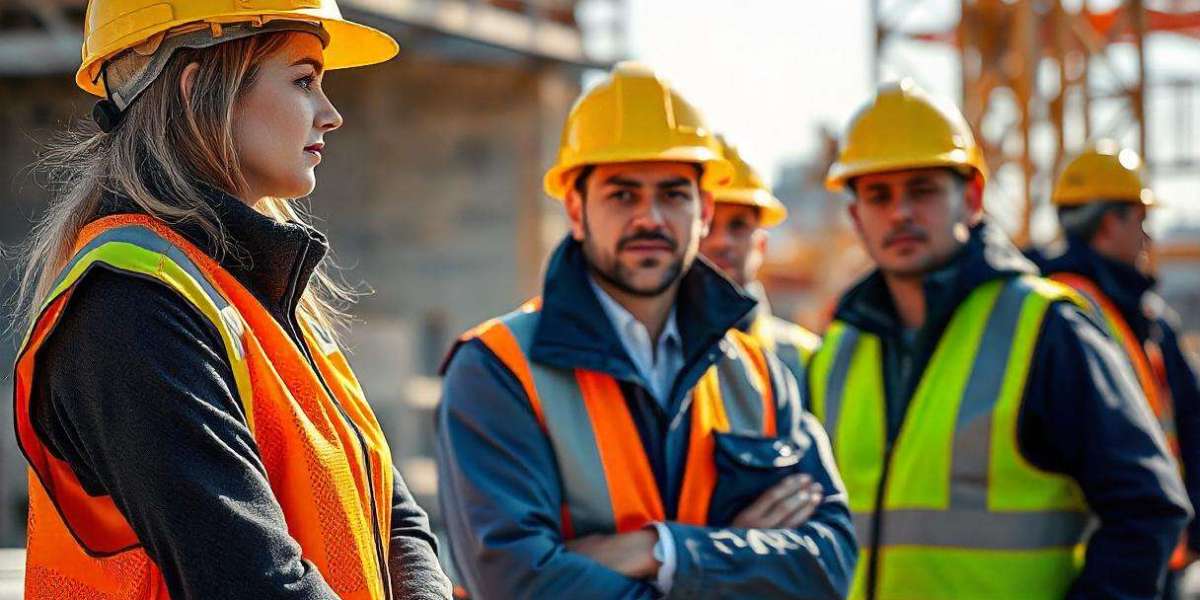Many workplaces, especially those in construction, mining, and outdoor environments, face serious hazards due to unstable ground. Slippery surfaces, loose soil, or weak flooring can lead to falls, equipment tipping over, or even structural collapses. If not properly addressed, these hazards can result in severe injuries or fatalities.
Real-Life Example: The Cost of Ignoring Ground Stability
Imagine a construction site where workers are laying the foundation for a new building. Due to recent rainfall, the ground has become soft and unstable. One worker, unaware of the risk, steps onto a weak spot, causing him to sink and lose balance. As he falls, he injures his leg and is unable to work for several months. If proper ground stability measures had been in place, this accident could have been prevented.
In this article, we will explore the risks of unstable ground, share real-life incidents, and provide a step-by-step guide on how to minimize these hazards effectively. This information is especially crucial for those attending a Safety Course in Pakistan, as understanding ground stability plays a vital role in ensuring workplace and environmental safety.
Common Risks of Working on Unstable Ground
1. Increased Risk of Slips, Trips, and Falls
Unstable ground, such as loose gravel, wet surfaces, or uneven flooring, significantly increases the likelihood of slips, trips, and falls. These accidents are among the leading causes of workplace injuries.
How to Prevent It:
- Conduct regular ground inspections to identify potential hazards.
- Use anti-slip materials or traction mats where necessary.
- Train employees on how to walk carefully on unstable terrain.
2. Heavy Equipment and Machinery Accidents
Operating machinery on weak or uneven ground can be extremely dangerous. Heavy equipment may become unstable, leading to tipping or mechanical failures.
How to Prevent It:
- Always assess the ground stability before using heavy machinery.
- Use reinforced pathways for equipment movement.
- Train operators on recognizing and avoiding unstable surfaces.
3. Risk of Structural Collapse
Working on weak ground near trenches, pits, or excavations can lead to sudden structural collapse, trapping workers underneath debris.
How to Prevent It:
- Conduct soil testing before starting excavation projects.
- Use support structures such as retaining walls.
- Ensure workers have access to emergency evacuation plans.
4. Health Issues Due to Vibrations and Ground Instability
Prolonged exposure to unstable ground can cause health problems, especially for workers operating vibrating machinery. This can lead to joint pain, muscle fatigue, and long-term nerve damage.
How to Prevent It:
- Provide anti-vibration gloves and shock-absorbing footwear.
- Limit the time workers spend on unstable surfaces.
- Conduct routine health assessments for affected workers.
Step-by-Step Guide to Mitigating Risks from Unstable Ground
Step 1: Conduct a Thorough Ground Stability Assessment
Before any work begins, assess the stability of the ground to identify potential hazards. This can be done by: ✅ Soil testing ✅ Visual inspections ✅ Using ground-penetrating radar for underground hazards
Step 2: Implement Proper Drainage Systems
Water accumulation can make the ground weak and prone to collapse. Installing drainage systems helps prevent erosion and increases stability.
Step 3: Use Reinforced Pathways and Temporary Ground Stabilization Methods
For sites with consistently unstable ground, consider using: ✅ Gravel or crushed stone pathways ✅ Steel plates or temporary ground mats ✅ Geotextiles to improve soil strength
Step 4: Train Employees in Safe Work Practices
Workers should receive proper training to identify and respond to unstable ground conditions. Investing in a Safety Course in Pakistan can provide employees with the necessary skills to prevent accidents and respond effectively in hazardous environments.
Step 5: Provide Proper Personal Protective Equipment (PPE)
To minimize injury risks, workers should wear: ✅ Slip-resistant boots ✅ Safety harnesses in high-risk areas ✅ Helmets to protect against falling objects
Step 6: Establish Emergency Response Protocols
In case of an accident due to unstable ground, there should be a clear and effective emergency response plan in place. This includes: ✅ Designated evacuation routes ✅ First aid stations on-site ✅ Rapid communication systems
Investing in Workplace Safety Training
Mitigating risks from unstable ground requires proper workplace safety training. Employers should consider enrolling their workers in Safety Courses that focus on hazard identification, risk assessment, and emergency response. Proper training not only prevents injuries but also ensures compliance with workplace safety regulations.
Read More: Find Affordable Safety Courses Here
Final Thoughts
Addressing the dangers of unstable ground is crucial for maintaining a safe and productive workplace. Employers must take proactive steps such as conducting risk assessments, training employees, and using proper safety equipment to prevent accidents. Investing in a Safety Course in Pakistan can provide employees with the right knowledge and skills to handle hazardous situations effectively.
How does your company manage workplace safety on unstable ground? Share your experiences in the comments below!



